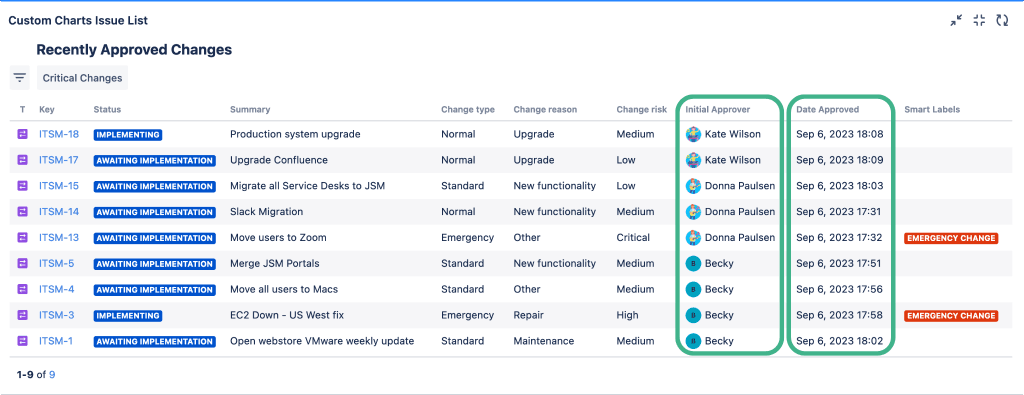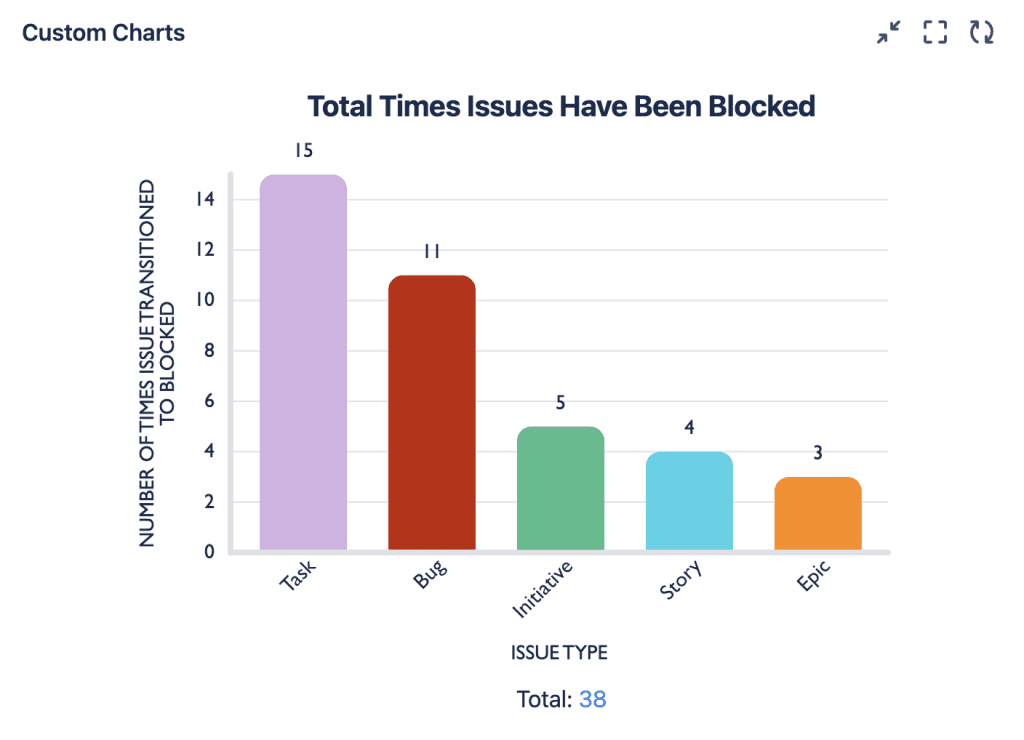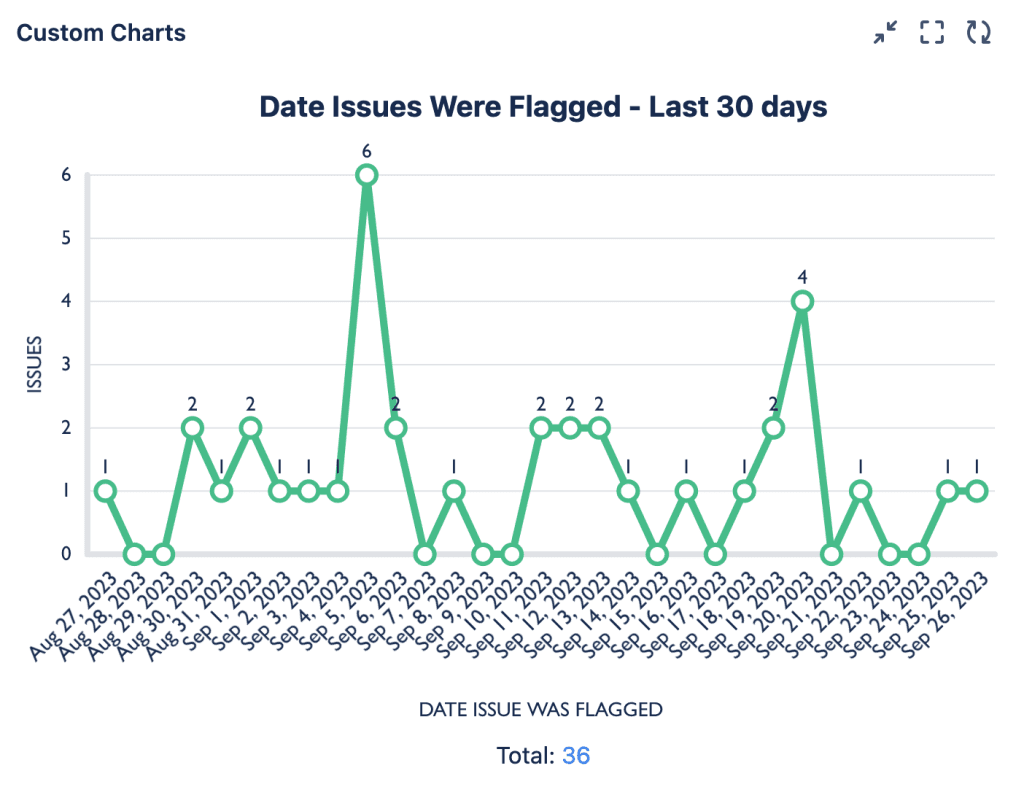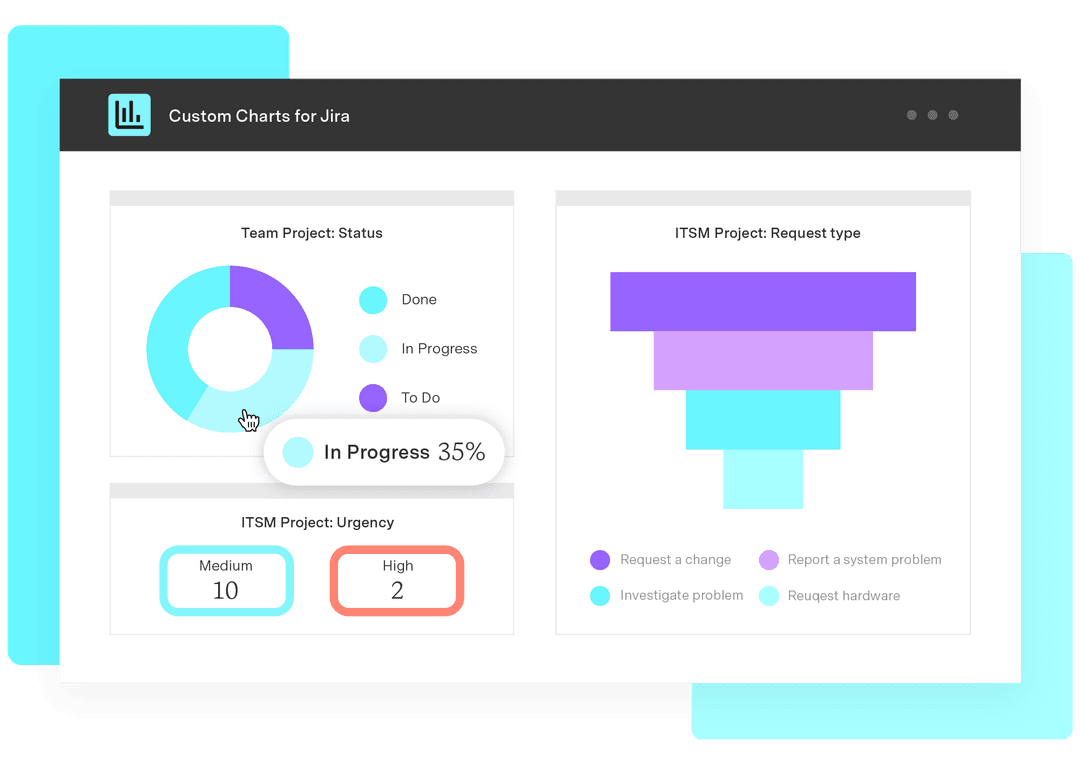Make better dashboards with Jira misc custom fields
Tempo Team
When it comes to customizing your Jira instance, there’s a fair bit you can do out of the box. Specialized workflows are very popular, but one customization users turn to frequently is custom fields. Users create custom fields to collect specific information on the Jira issues their teams create.
Jira comes with many custom field types, including number fields, and multi-line text fields. But many teams want a deeper level of detail on their Jira tickets than Atlassian provides, for the purposes of creating more useful screens, better searches, and more insightful reports and dashboards. Sometimes you might also want to make Jira’s ‘hidden’ information accessible and reportable, such as the date and author of a specific transition or field change.
You can do all this with Jira Miscellaneous Custom Fields (JMCF), an Atlassian Marketplace add-on from Appfire that gives users the ability to create unique custom fields not included with native Jira. Jira Misc Custom Fields comes with 10 different custom field types:
Last Field Change Time
Last Field Changed by User
Parent Status
Status Entered Time
Status Entered by User
Transition Time
Transitioned by User
Transitioned by Users
Transition Count
Time in Status
You can see a lot of these items natively in Jira when viewing an issue and its history. However, you can only report on this information if you create custom fields to store the data. Automation can help collect a lot of it if you have Jira Premium. If you don’t, JMCF is the answer.
Built-in Jira reports and gadgets are particularly limited in terms of reporting on data from 3rd party apps. Therefore you’ll need an Atlassian Marketplace reporting add-on like Custom Charts for Jira and Confluence to be able to make reports on JMCF data that are actually useful.
Let’s take a look at some use cases for JMCF and, in combination with Custom Charts for Jira, some dashboard reports to make that Jira data more accessible to users.
As mentioned above, JMCF’s 10 custom fields includes “Time in Status”. Just as an FYI, Custom Charts for Jira can actually report on time in status without needing JMCF.
List of recently approved changes in Jira

In our Jira, we’ve created 2 JMCF custom fields to capture approval data for our IT service management (ITSM) project using the “Transitioned by User” and “Status Entered Time” field types.
We’re using the “Transitioned by User” field type to log the user who first approved the change. In our Jira, the approval happens when a user transitions the change from “Awaiting Approval” to “Awaiting Implementation”. We have it set to display the earliest user and named the field “Initial Approver” (because it may need to go through the approval process again if it moves to “Blocked” or back to “Opened”). We’re using the “Status Entered Time” field type to log the date of the initial approval, and have named the field “Time Approved”.
While you can see the approval history of an issue in Jira, with the addition of these 2 JMCF fields, we can build reports off of the data, like the Issue List above. Issue List is a gadget that comes with Custom Charts for Jira, which we’re using to display recently approved changes from our ITSM project thanks to our 2 new fields.
Each row on the list represents a change, and each column represents a Jira field. You can see we have included several system and custom fields as columns on the list. The columns outlined in green are the 2 JMCF fields we created. Having this information in one place is great for ITSM support agents involved with change management. For example, if questions arise around a change’s approval, users have an instant view of who first approved the change so they can reach out to them.
We’re also using a feature of Issue List called Smart Labels to draw agents’ attention to important issues on the list, in this case, “Emergency Changes”.
Total times Jira issues have been blocked

JMCF comes with another helpful field type, “Transition Count”, which lets us see how many times an issue has transitioned to a certain status. We’ve built the field in our Jira to specifically look at the “Blocked” status. We have named this field “Number of Times Issue Transitioned to Blocked”.
Using Custom Charts, we’ve created a bar chart to pull in issues from our software team’s project that have due dates in the next 30 days. The Chart by is set to break the data down by issue type, and we are using the “Transition Count” field as our calculation. We can see that tasks have been blocked 15 times. Since these issues are all due in the next 30 days, this signals a major problem for the team. Progress stops when work is blocked, and blocked issues often hold up other work. What if the tasks frequently moving to “Blocked” are necessary for finishing some of the stories we need to complete this sprint? The work we committed to and potentially some of the features customers expected to see in the next release might have to be pushed back.
We can also see that bugs have moved to “Blocked” several times. What if the bugs are making it difficult to use our product? Not delivering on our customers’ expectations, along with a poor user experience, can cause customers to lose trust in our product and team.
Because we have this report, we can quickly and easily prioritize the issues that are frequently getting blocked so we can home in on the root of the problem.
Last time a Jira issue was flagged

On boards and issues in Jira Software projects, users can add flags to issues that are considered impediments. It can be helpful for users to see the dates issues were last flagged to see whether there are recurring problems that should be remedied.
In our Jira instance, we are using the JMCF field type, “Last Field Change Time”, to track the last date the issues in our software team’s project were flagged. We’ve named it “Date Issue Was Last Flagged”.
Using a Custom Charts for Jira line chart, we are charting by our new JMCF field, with the date range set to look only at dates over the last 30 days. We can see that there were several days this month where multiple issues were flagged on certain days. For example, on September 5th, 6 issues were flagged. We can also see that issues are flagged on almost a daily basis. If issues are flagged that frequently, it could mean deadlines are being missed and work is getting delayed. It also might mean these issues are getting in the way of the work other teams are trying to complete.
In order to understand the flagged issues a bit better, viewers can easily see the detailed issue information by clicking the dots on the chart. A list of the issues will open in a separate tab, enabling them to understand why those issues were flagged and devise a plan to get the delayed work, and the team, back on track.
Conclusion
Appfire’s Jira Misc Custom Fields (JMCF) is a great tool for collecting for more specific and detailed information about what’s happening in your Jira. But collecting the data is only half the job. The other half is building reports so you can actually use it. Because of native Jira’s restrictions when it comes to 3rd party app data, it becomes necessary to use a tool like Custom Charts for Jira and Confluence to really get the benefit of having JMCF.
But the good thing is that Custom Charts isn’t just a tool for reporting on 3rd party data. It’s a data visualization app for making relevant, engaging reports with full control over the way your data is presented, from color customization to segment reordering to legend positioning.
And the other good thing about making reports with Custom Charts is that they live on your Jira dashboard. It means that they can appear side by side on one screen, offering teams and managers a brilliant, live overview of everything that’s going on.
If you’re interested in building reports and dashboards with more insightful and actionable data, try Custom Charts for Jira and Confluence free on the Atlassian Marketplace.











































